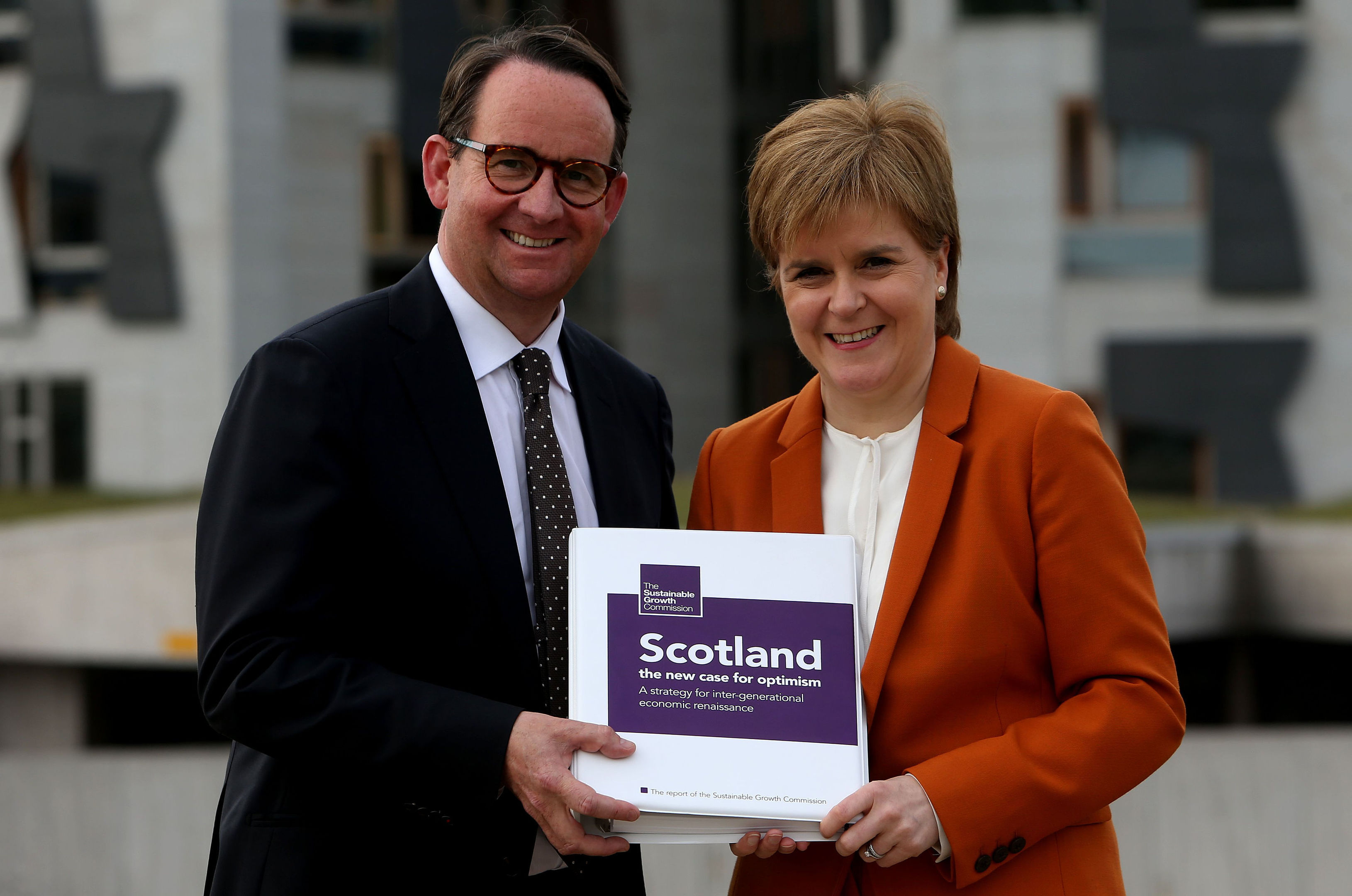
A SEPARATE Scottish currency could be set up after independence, an SNP-commissioned report has suggested.
As revealed in last weekend’s edition of The Sunday Post, the Sustainable Growth Commission report suggests that an independent Scotland could move to its own currency in the future.
It would be dependent on passing six tests, covering fiscal sustainability, central bank credibility, sufficiency of reserves and trading patterns.
The paper says an independent Scotland would not need a formal currency union after leaving the UK, but would retain sterling for a transitional period, with interest rates set by the Bank of England.
New SNP blueprint for independence set to include creation of a Scottish pound
The paper also covered a number of other areas including the deficit, growth and public spending.
The Commission insisted that economic growth in Scotland can be lifted to “to take living standards to equal the best small countries in the world over a generation”.
The report said: “Our central argument is that Scotland should be seeking to emulate the performance of the best small countries in the world, rather than sticking to its current position as the best of the rest of the UK regions and nations outside of the south east of England.”
But it said the current UK model “which concentrates too much economic activity in London and the South-East region is holding Scotland and the other regions and nations of the UK below their potential”.
The Commission looked at the economies of 12 small independent states – Austria, Belgium, Denmark, Finland, Hong Kong, Ireland, the Netherlands, New Zealand, Norway, Singapore, Sweden, and Switzerland – as part of its work.
Median income in these nations is 14% higher in terms of GDP per head, the report said, the equivalent of £4,100 a person.
“This shows what is possible for an independent Scotland,” the Commission stated.
The full report can be read at sustainablegrowthcommission.scot
Author Andrew Wilson said: “It is important that independence must never be seen as a magic wand or quick and easy step to success.
“Indeed, there is no pot of gold, black or otherwise, at the foot of the independence rainbow. But there is a toolbox and using it will mean taking responsibility for choices that seek to create a stronger economy, sustainable public finances and a fairer society.
“Independence is a means to those ends, I believe a necessary but not sufficient step to success. The choices that are then made about the country’s strategy and how effectively they are delivered are what will determine success – we are our choices.”
Scotland’s First Minister and SNP leader Nicola Sturgeon said: “This report rightly doesn’t shy away from the challenges we face but presents ways in which those challenges can be addressed – and sets out recommendations on currency – which as a country we should all debate and discuss.
“Scotland is now in a very different political and economic situation to 2014. There is no status quo and we know that being taken out of Europe and out of a market around eight times bigger than the UK market alone will hit our economy.
“That is why it is time to begin a fresh debate and to replace the despair of Brexit with optimism about Scotland’s future.
“We look forward to debating the report’s recommendations – both within the SNP and with business, trade unions and communities across Scotland.”
Scottish Secretary David Mundell said: “Scotland voted decisively in 2014 to remain part of the UK. That decision should be respected. The public do not want another divisive independence referendum.
“We want to work with the Scottish Government to maximise the opportunities our exit from the European Union will bring. We should all put our energies into making sure we get the right deal for Scotland and the rest of the UK as we leave the EU.”

Enjoy the convenience of having The Sunday Post delivered as a digital ePaper straight to your smartphone, tablet or computer.
Subscribe for only £5.49 a month and enjoy all the benefits of the printed paper as a digital replica.
Subscribe